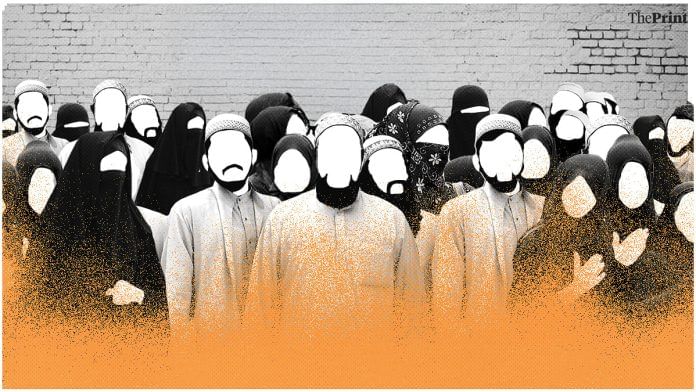New Delhi: Artificial Intelligence (AI)-generated hateful content has “sharply risen” since mid-2024, a recent report by the Centre for the Study of Organised Hate (CSOH), a Washington, DC-based nonprofit think tank, has revealed. The report said that such content was “minimal” through 2023 and the first half of 2024.
However, there was a sudden surge after June 2024, with AI-generated hateful content peaking notably in September 2024 and again in March 2025. The rise in September occurred in parallel with the emergence of the “Rail Jihad” conspiracy theory, and the March spike coincided with the popularity of Ghibli Art.
For the report, the CSOH compiled 1,326 publicly available Artificial Intelligence-generated images and videos, retrieved from 297 accounts across three social media platforms. The posts were uploaded earlier, sometime between May 2023 and May 2025.
Nearly 187 posts across X, Facebook, and Instagram, considered to violate community guidelines, had been reported. But none of the posts were removed, highlighting the persistent failure of the platforms to enforce their policies.
The report highlighted that AI-generated hateful content primarily revolved around four key themes: the sexualisation of Muslim women, exclusionary and dehumanising rhetoric, conspiratorial narratives, and the aestheticisation of violence.
Among these, posts featuring the sexualised depiction of Muslim women had the highest engagements—6.7 million. These images frequently portrayed Muslim women in burqas surrounded by groups of men, with captions insinuating incestuous family ties.
AI-generated imagery was also heavily used to reinforce conspiracy theories such as “Love Jihad,” “Population Jihad,” and “Rail Jihad”. All such posts were listed under the conspiratorial narrative theme and suggested the Muslim community’s involvement in undermining the national integrity or security of India.
Posts under exclusionary and dehumanising rhetoric encouraged violence against Muslims and accounted for 23.4 percent of the AI-generated hateful imagery. Many of these used animal imagery to depict Muslims and portrayed them as intent on damaging property and threatening national interests.
Posts in the category of aestheticised violence used AI to normalise and legitimise anti-Muslim violence, the report found.
The findings point to a rising wave of anti-Muslim sentiment, hence the CSOH report being titled “AI-generated Imagery and the New Frontier of Islamophobia in India”.
These posts received a total engagement of 2,73,00,000 across X, Instagram, and Facebook, as measured by the sum of likes, comments, reposts, and shares.
The 1,326 posts analysed in the report showed uneven distribution across the three platforms. The highest number came from X (509), followed by Instagram (462) and Facebook (355).
X had the highest engagement, with 24.1 million views, 5,64,400 likes, 29,200 comments, and 1,79,800 shares. In comparison, the engagements on Instagram numbered around 15,30,000 likes, 24,800 comments, and 3,13,100 shares. Meanwhile, Facebook recorded 1,19,000 likes, 16,000 comments, and 8,200 shares.
The CSOH report also said, “Hindu nationalist media outlets, notably OpIndia, Sudarshan News, and Panchjanya, played a central role in producing and amplifying synthetic hate, embedding Al-generated Islamophobia into mainstream discourse”.
(Edited by Madhurita Goswami)
Also Read: Salahuddin Owaisi carved space for Muslims in Indian politics. Hyderabad was his arena







One sided narrative ! There are similar depictions against women from Hindu and Silh communities available online but it seems the DC based think tank is more concerned with one specific religion and not the women in general.